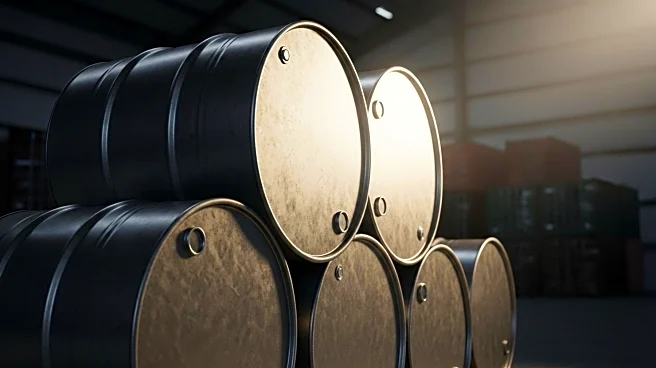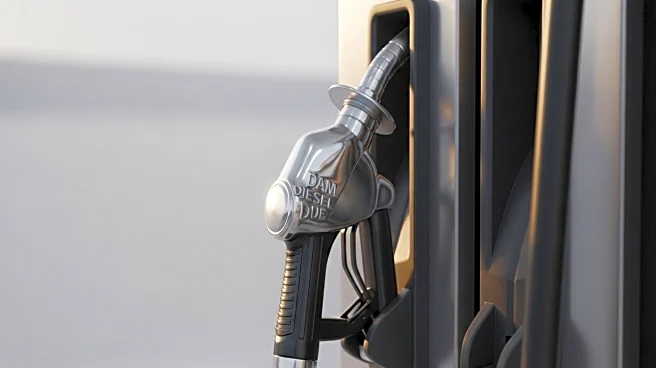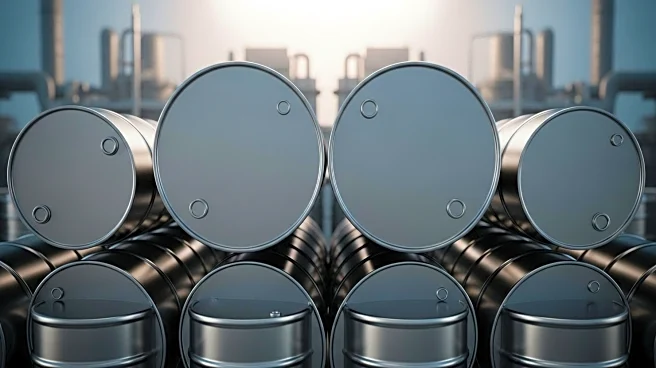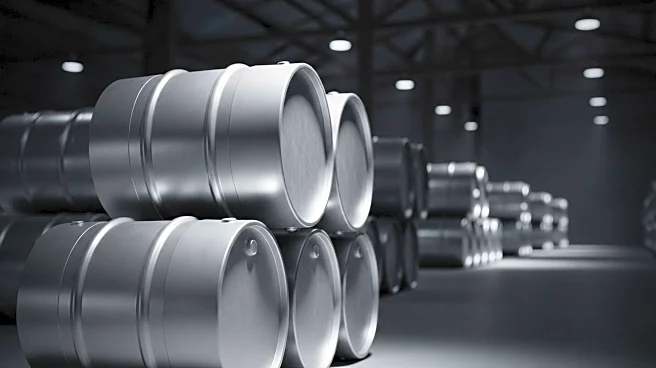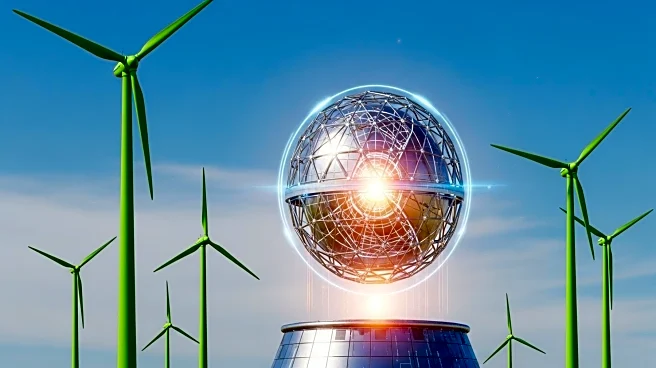What's Happening?
The U.S. Energy Information Administration (EIA) forecasts that U.S. total distillate inventories will end 2025 and 2026 at multiyear lows due to significant inventory drawdowns, strong export demand, and domestic production declines. The first half of 2025 saw a 17% decrease in inventories, driven by reduced supply of renewable diesel and biodiesel, and increased petroleum distillate consumption. Refinery closures and strong international demand are expected to continue impacting inventory levels.
Why It's Important?
Low distillate inventories can lead to higher prices and increased volatility, particularly during high-demand periods such as the autumn harvest and winter heating season. The situation poses challenges for industries reliant on distillate fuels, including transportation and agriculture. The forecast highlights the need for strategic planning and investment in renewable energy sources to mitigate supply disruptions and stabilize prices.
What's Next?
The EIA expects renewable diesel and biodiesel production to partially recover in the second half of 2025, helping to offset increased petroleum distillate consumption. Continued strong international demand will likely keep pressure on U.S. inventories. Industry stakeholders may need to explore alternative energy sources and efficiency measures to manage costs and ensure supply stability.
Beyond the Headlines
The reliance on petroleum-based distillates raises environmental concerns and underscores the importance of transitioning to renewable energy sources. Policy measures and incentives can support the growth of renewable diesel and biodiesel production, contributing to energy security and sustainability. Collaboration between government, industry, and consumers is essential to address the challenges of energy transition.

